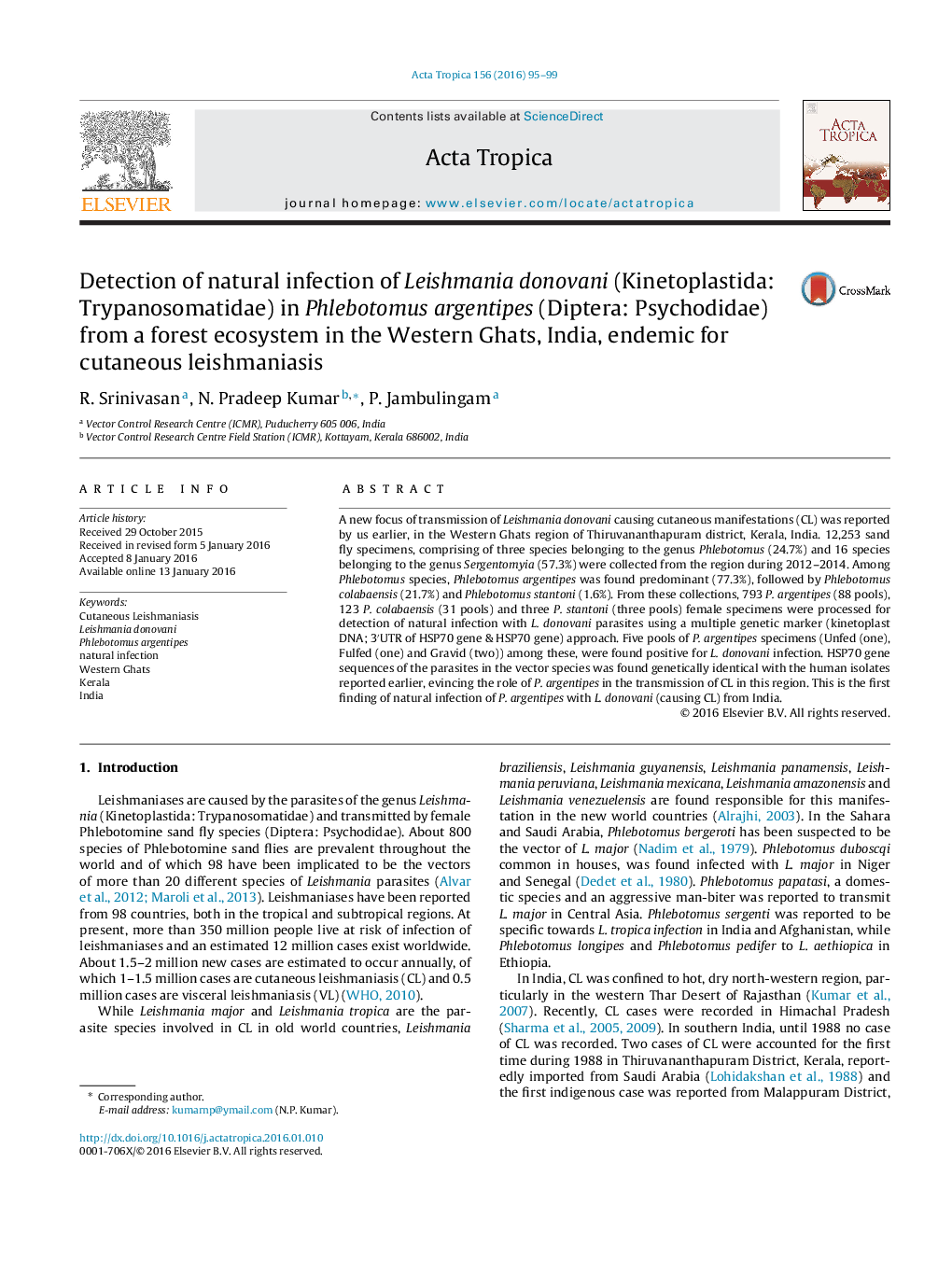| Article ID | Journal | Published Year | Pages | File Type |
|---|---|---|---|---|
| 3393750 | Acta Tropica | 2016 | 5 Pages |
•Cutaneous leishmaniasis (CL) caused by Leishmania donovani was recorded recently among the Kani tribes dwelling in the evergreen Agasthyamala forest, Western Ghats, India.•In the present study, we detected natural infection of L. donovani in unfed, fulfed and gravid specimens of Phlebotomus argentipes collected from this region using a multiple genetic marker approach, indicating the role of this sand fly species in disease transmission.•The HSP70 gene sequences of L. donovani parasite isolates from P. argentipes was found to be genetically identical with the human isolates, confirming P. argentipes to be the vector of CL in this endemic region.
A new focus of transmission of Leishmania donovani causing cutaneous manifestations (CL) was reported by us earlier, in the Western Ghats region of Thiruvananthapuram district, Kerala, India. 12,253 sand fly specimens, comprising of three species belonging to the genus Phlebotomus (24.7%) and 16 species belonging to the genus Sergentomyia (57.3%) were collected from the region during 2012–2014. Among Phlebotomus species, Phlebotomus argentipes was found predominant (77.3%), followed by Phlebotomus colabaensis (21.7%) and Phlebotomus stantoni (1.6%). From these collections, 793 P. argentipes (88 pools), 123 P. colabaensis (31 pools) and three P. stantoni (three pools) female specimens were processed for detection of natural infection with L. donovani parasites using a multiple genetic marker (kinetoplast DNA; 3′UTR of HSP70 gene & HSP70 gene) approach. Five pools of P. argentipes specimens (Unfed (one), Fulfed (one) and Gravid (two)) among these, were found positive for L. donovani infection. HSP70 gene sequences of the parasites in the vector species was found genetically identical with the human isolates reported earlier, evincing the role of P. argentipes in the transmission of CL in this region. This is the first finding of natural infection of P. argentipes with L. donovani (causing CL) from India.
Graphical abstractFigure optionsDownload full-size imageDownload as PowerPoint slide
